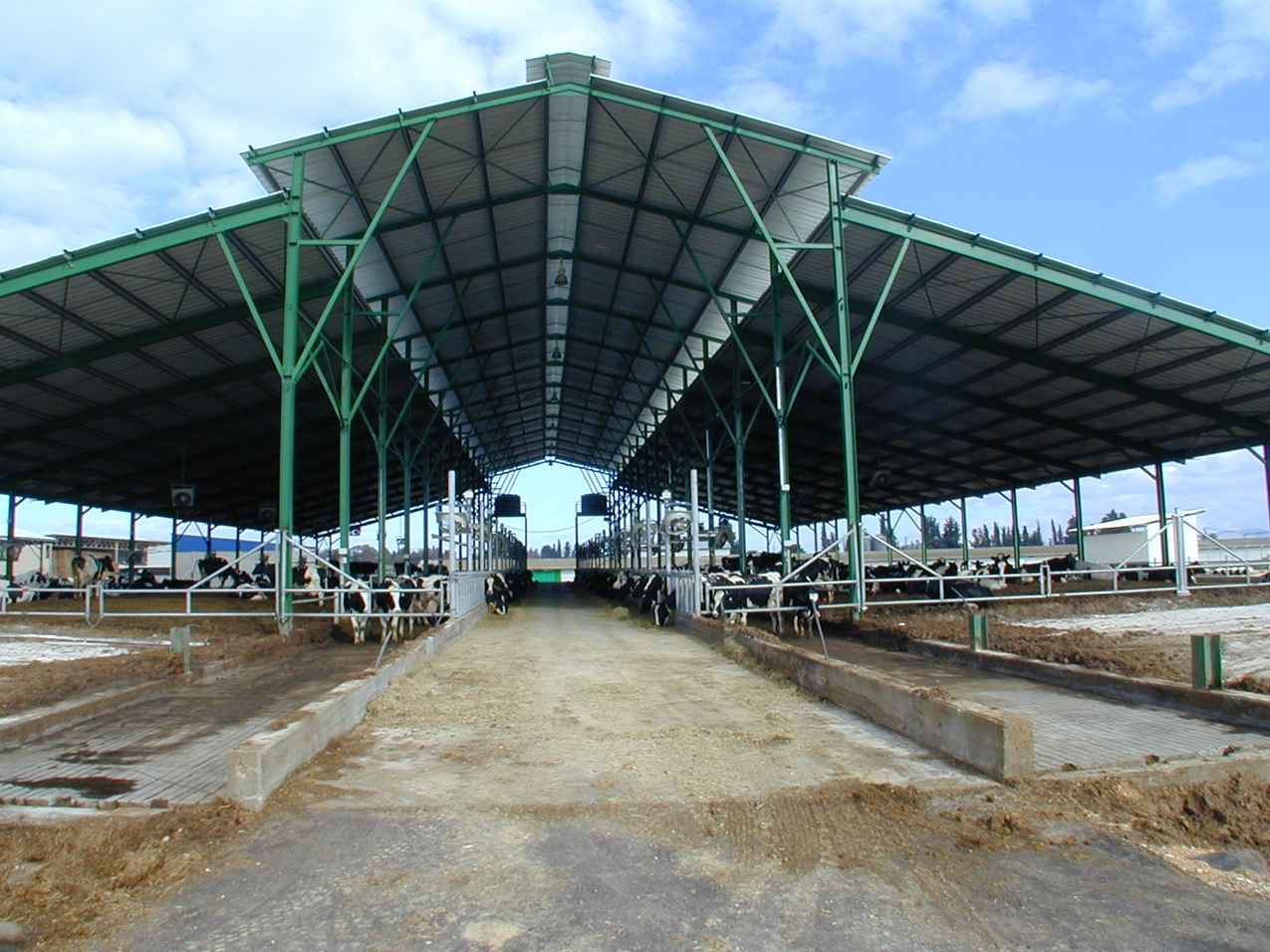Cow management in a hot climate

Israel enjoys the highest average milk ?production in the world, close to 12,000 kg/cow/year, despite having a very hot climate. An expert from the Ministry of Agriculture explains how this has been achieved in a short period.
By Steven Rosen, Extension Service at Israel Ministry of Agriculture
On the surface area of 22,000 km2, the southern part is covered with desert, leaving an area for dairy plants and farms mainly on the west coast and northern region, including farms 400 metres below sea level. The number of dairy farms declined quickly from about 1,400 in 1999 to 950 in 2011. On the other hand, the average annual production per farm went up to 1,400 in 2011 from 800 in 1999 (Figure 1).
Excellent yields
Yields are expected to increase everywhere in the world as Figure 2 shows, while Israel was already ahead with almost 12,000 kg milk per head in 2010. In 2012, the national production volume was 1,388 million litres of cow milk, 8.8 million litres of sheep milk and 11.4 million litres of goats milk. The dairy herd consisting of 124,000 Israeli Holstein cows are genetically improved to adapt to the local climate and diseases. Israeli dairy farming and milk production is a planned industry, with quota system, price control and milk law. Every few years the government conducts a national survey in order to control free market and set consumer prices.
Automation
Kibbutz (see Israeli farm structure) and most family farms use automated dairy systems, feeding on TMR (total mixed ration) as much as they want, improving dry matter intake and herd health. Today many dairy farms use afilab, a milk analyser, that measures each cow’s milk fat, protein and somatic cell count. Almost all family farms and close to half of the communal farms buy their food from an ‘area feed centre’. The rest have their own ‘on-farm feed centres’.
Adjusted diet
The popular forages in Israel are wheat silage and wheat hay because they utilise winter rain and demand little irrigation. There is also some use of winter legume hays which need little or no irrigation, mostly clover and vetch. Some sorghum silage is also used as feed, which has gained popularity recently. A limited amount of corn silage and alfalfa hay are also included. Wheat or oat hay are available particularly for dry cows, but not high quality. Straw and fermented poultry manure are used for heifers. Israeli rations use large amounts of by-products and high fibre concentrates. Citrus pulp, mostly dried but sometimes also wet whey, DDGS, gluten feed, wheat bran and bakery wastes are utilised as valuable feed ingredients for cows. All dairy farms feed vitamin and trace mineral mix, and many of them also use additives including live yeasts and toxin binders. When there are digestive problems, buffers (sodium bicarbonate) and bypass fats are added which are seen as another energy source. They also feed urea as an inexpensive soluble protein source. An example ration of dry matter feed is shown in Table 1, much dependent on prices and availability. Quickly fermentable raw materials are popular. A bit of sugar is also added to raise the fat content of milk.
Coping with heat stress
The Israeli climate is not ideal for dairy cattle. The impact on dairy cattle
physiological parameters is significant when the temperature is 320C compared to 180C (Table 2). Forage intake by cattle goes down by as much as 22%. Maintenance of the body fluids e.g. respiration, water intake, urine volume and evaporation are also influenced by temperature. There are some nutritional changes in the summer to help the cows produce less metabolic heat, including wider use of high quality forage, more bypass fat, and some mineral manipulation.
To manage heat stress in dairy cows, various conditional methods are taken:
– Prevention or lowering of solar radiation by shading and whitening of roofs
– Direct refrigeration (when humid) of the animal by showering, wetting, ventilation, or combination of them
– Indirect refrigeration (especially when dry) of the environment by fogging, misting, cooler and air conditioning
Main feeding measures to cope with heat stress are:
– Re-formulate rations (concentrate energy and protein, reduce forage, use high quality forage, check minerals, use additives, and use appropriate water content)
– Feed more frequently and avoid fermentation at feed bank
– Feed in evening and at night when the digestion and fermentation are done
– Use palatable feeds
Cooling, cooling and cooling
All farms use intensive cow-cooling systems, mainly evaporative cooling, employing showers and fans intermittently in the holding pen. The cows are cooled between six and eight times a day: three times before milking and at least once between milking, for a total of 4-6 hours per day on average.
Recently, the ministry has begun testing new systems of keeping cows cool, particularly closing barns and employing environmental cooling using giant helicopter fans and high-pressure foggers.
Secret behind success
Israel has achieved high milk yields despite having an unfavourable climate, mainly thanks to the cooperation, high level of professional services, shared database, and high technology that has been widely adopted. Education is equally essential for future success. Moreover, the dairy industry is the only industry in Israel which is still planned nationally, including implementation of milk quotas, and the industry is seen as still performing national missions.
The presentation was given by Mr Steven Rosen at a seminar organised by Lallemand
The presentation was given by Mr Steven Rosen at a seminar organised by Lallemand
Israeli farm structure
57% of milk produced is on ‘Kibbutz’ communal dairy farms
– 3 times milking a day
– 240 to 1000 milking cows per farm
– Producing 12,000 kg per cow
43% of milk is produced on ‘Moshav’ family farms
– 2-3 times milking per day
– 40-350 milking cows per farm
– Producing 11,000 kg per cow











